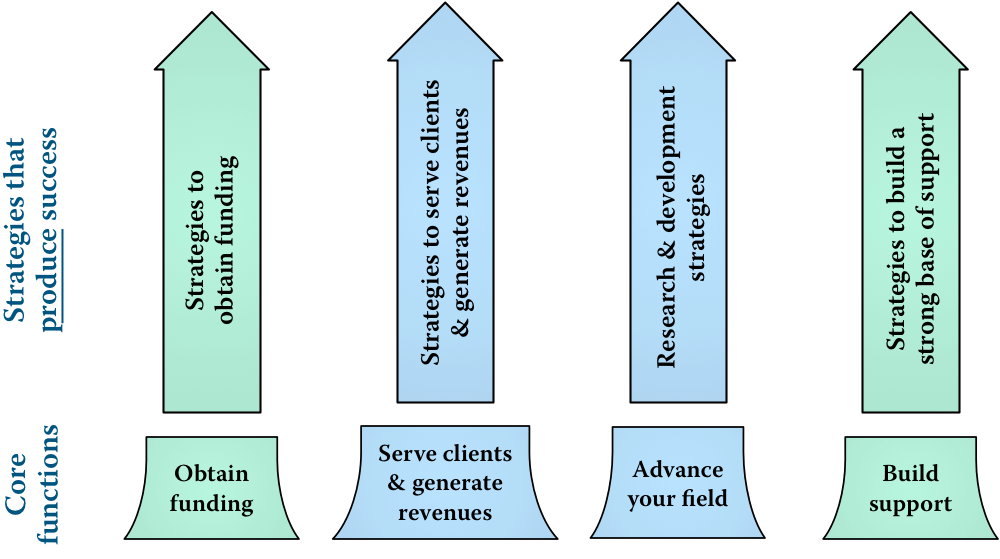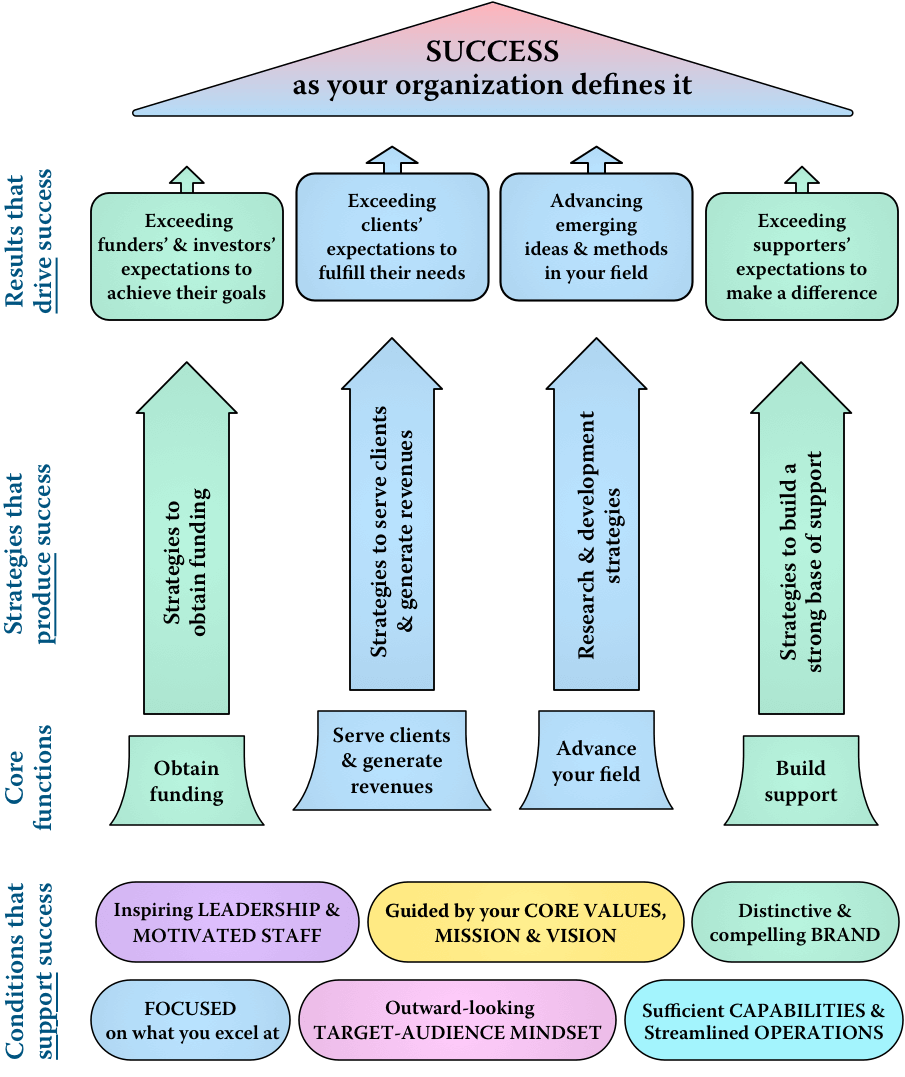Strategic planning
Your strategy should strengthen what supports, produces, and drives your success. Our planning model is the only one that does this. Our free Strategic Planning Guide, Guiding Statements Guide, and Strategic Planning Workbook how to design more effective strategies to deliver on and support your mission.
Do you know the dirty little secret about strategic planning?
Management experts estimate upwards of 90% of strategic plans are never finished,
or if they are, fail to improve performance.
Frankly, we’re not surprised.
If you’ve done strategic planning, you’re probably not either.
In nearly three decades of helping different types of organizations plan,
we’ve never found a planning model that works.
Somewhere along the line, we abandoned them all.
Why?
Because they dawdle on subjects and exercises of little value to most organizations.
Favorites include the SWOT analysis (strengths, weaknesses, opportunities, and threats),
environmental scanning, and trend analysis.
And most planning processes substitute opinion polling
(brainstorming and ranking) for strategic research.
Instead of investigating critical issues before planning meetings,
brain-fried list makers masquerading as planners plaster their meeting room walls
with reams of flipchart paper covered in thickets of colored stickie dots.
Pity the poor note takers for they shall inherit the thankless job of trying to make sense of these jumbles.
And that’s just for starters when it comes to problems with the current state of strategic planning.
Our strategic planning model
The only reason to do strategic planning is to make your organization more successful. If your planning process isn’t designed to do that, you’re wasting your time—probably a lot of time!
Your planning process needs to address the challenges you face in making a difference in the world—whether it’s in your community, your region, or the world. If it’s designed for profit-making enterprises, it won’t be much help. And most “values-driven” planning models were derived from profit-driven planning models. So they won’t be much help either. That’s why we designed our new approach to strategic planning model from scratch.
It has one goal: to help you identify and strengthen what supports, produces, and drives your success. You define what success means to your organization, which should be, but rarely is, an essential step in planning models.
Unlike most planning models, each step is linked to the preceding and following one. Other planning models take a “scattergun” approach. They can leave you scratching your head about how all your “planning exercises” and reams of flip chart paper peppered with colored dots are supposed to fit together into a plan. We organized our planning process around six questions shown above.
We believe that to succeed at planning; you need to identify and understand the individuals and organizations you serve—and determine your success. Though the field of strategic marketing, which includes branding, is designed for this sole purpose, we know of no other planning model that employs its ideas and tools in strategic planning as ours does. This unique feature of our planning model will give your organization the knowledge and tools it needs to exceed the expectations of those on whom its success depends.
Conditions that support success
The figure above shows the six conditions that support success in many world-changing organizations. Your organization might have different ones. If you use our planning process, your planning team will split into two or three small groups—as it will do several times while planning—to assess how well several conditions support success. These subteams report their findings and recommendations to the whole planning team, which decides if the strategic plan needs to address any of them. To strengthen the relationships between those who guide and work in the organization, each subteam should include a mix of organizational leaders, board members, and staff.
Strategies that produce success
Strategies are the broad ways that a world-changing organization delivers on, funds, and builds support for its mission. The more ingenious your strategies, the more successful your organization will be. But most planning models don’t concern themselves with strategies or success.
The figure on the right shows the core functions that many world-changing organizations need to carry out to succeed and how strategies perform them.
But many organizations have been carrying out their core functions in the same way for so long—sometimes before the dawn of the digital age—that they don’t think of them as strategies but rather “just what we do.” By failing to direct planners to identify the strategic options to perform each function, traditional planning models can reinforce their feeling of being out of options to make their organization more successful.
But our model is different. It asks planners to identify the strategic options to perform each function before they decide which are best. We also encourage the planning team to split into subteams and assign each a core function to evaluate.
Results that drive success
The figure on the left shows the key drivers of success of the four core functions of many world-changing organizations. Your organization might have different ones. Usually, the whole planning team identifies and evaluates their organization’s key drivers of success. Since the success of most core functions and the strategies that carry them out depend on meeting or exceeding the expectations of those they are intended to serve, most key drivers of success reflect their success at doing so. The key driver of success for the research and development (R&D) core function and its strategies are the exception.
Introducing a new way to visualize
your organization and its strategies
If you can’t draw a picture of what your organization does and what its success depends on, you’ll probably have a tough time planning. Most people probably visualize their organization as an “org” chart (organizational chart) that groups units into departments and divisions. But an org chart has almost no strategic value.
Our success map shows how your organization’s success arises from the conditions that support success, the strategies that produce it, and the results that drive it. It makes strategic planning much easier to understand, especially how different facets of strategic planning fit together. And it enables you to visually spot weaknesses in your strategies and figure out how to fix them. Our “hands-on” approach to success mapping makes planning come alive—even exciting!






